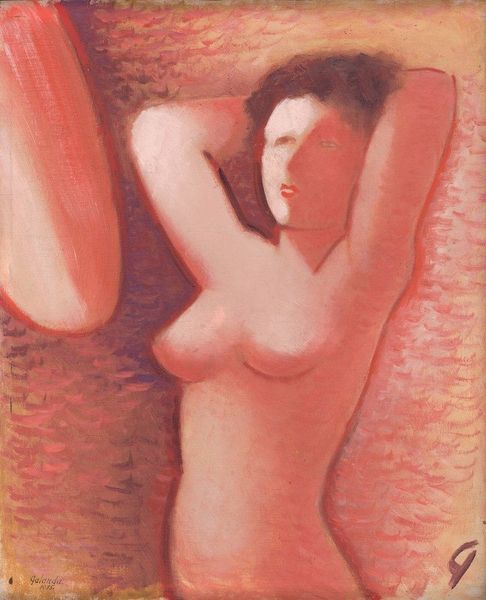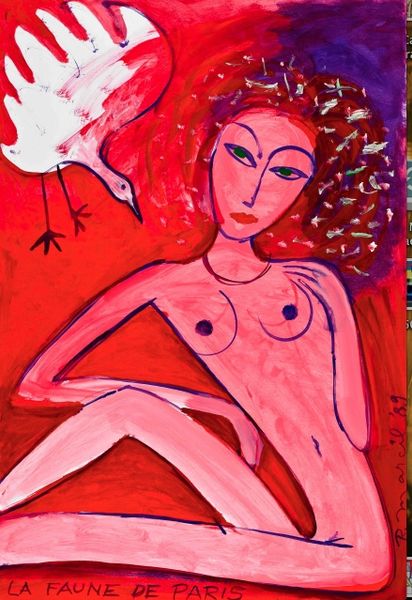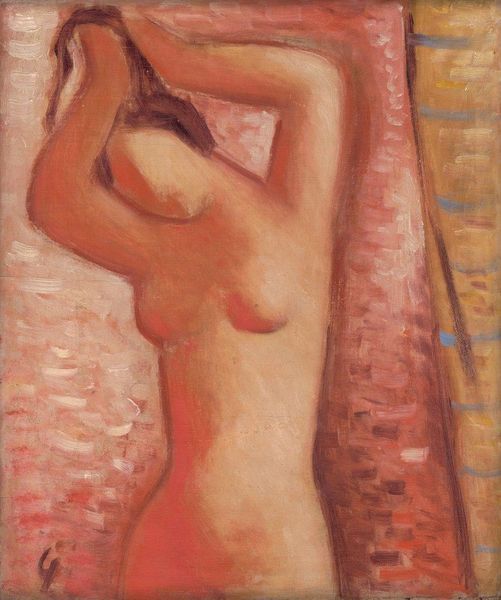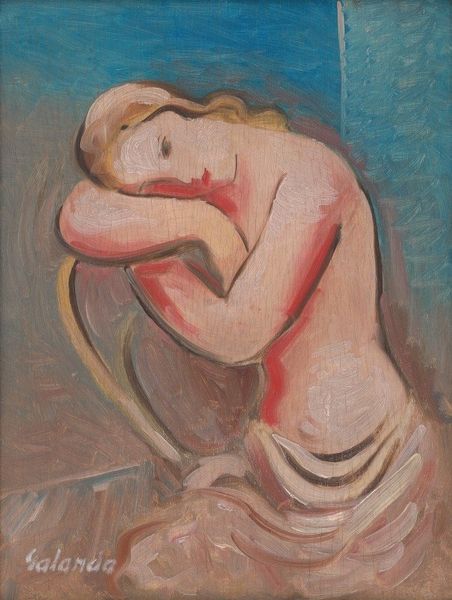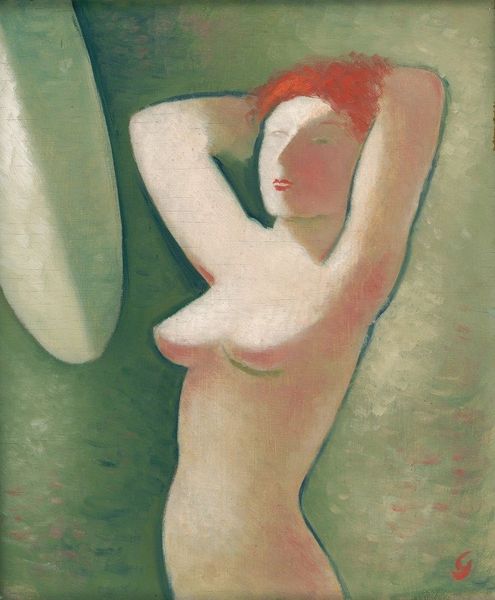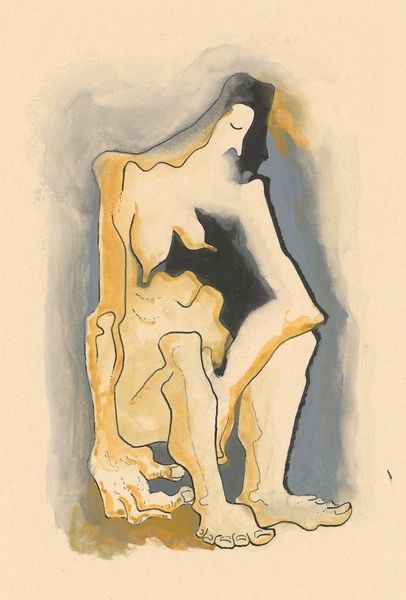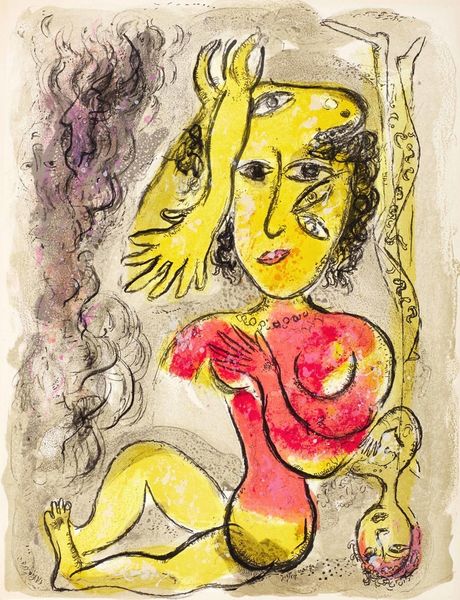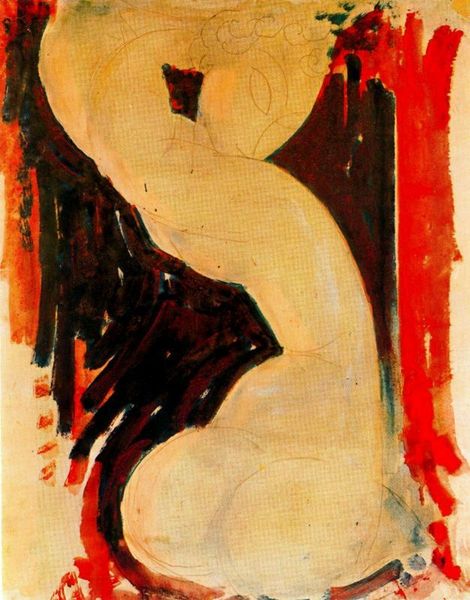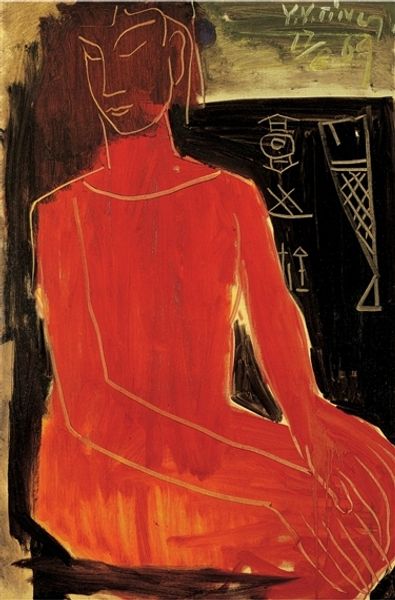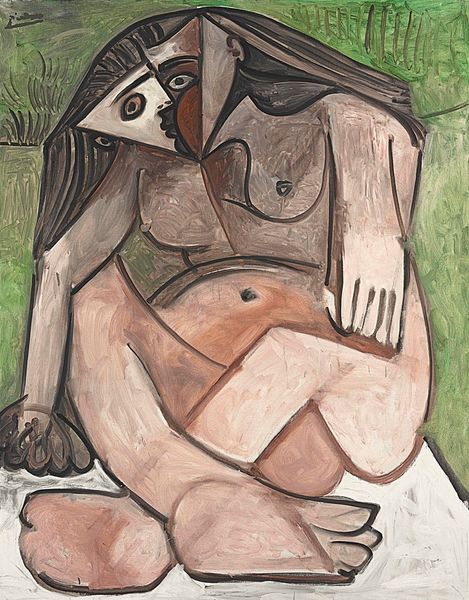
Copyright: Public Domain: Artvee
Curator: Here we have Mikuláš Galanda's "Grooming," created in 1931. The work is rendered in oil paint. Editor: The first thing that strikes me is the palpable physicality of the paint itself – that thick, almost textural quality despite the flat, simplified forms. It feels quite… raw. Curator: Raw, yes, but also consider Galanda's broader engagement with the themes of identity and societal expectation. He, along with others, advocated for a more socially conscious art, turning toward the plight of the working classes. Editor: I notice how the artist depicts the body with simplified shapes and flattened perspective, minimizing detail – the faceless subject is both a body and not, really. And yet there's still attention paid to representing a very particular task, in very concrete way, grooming as a everyday job! Curator: Right. We are confronted with a stark rendering, stripping away romantic notions. Galanda uses the language of modernism to create an image pregnant with implications about the position of women. He does so as an attempt to speak truth about their labour as it stands against popular myths. Editor: This simplified depiction, also creates distance and, perhaps even comment, on the subject's exploitation and dehumanization under conditions of oppressive labour, but the material and method seem important to that message too. What kind of brushes were used? Were the pigments local? How were these elements influenced or limited by globalized trade, perhaps? These questions could provide even greater insight to the impact the work produces. Curator: A close examination of materials brings out how global dynamics affected even art materials and processes during this time. Thanks to you, I am seeing deeper ways to bring that understanding back to this portrait’s historical importance within its period. Editor: Exactly, because only in understanding materiality we can connect how art practice interacts and intersects in social discourses, such as feminism or labour theory, and the impact these discourses and materials have had over it.
Comments
No comments
Be the first to comment and join the conversation on the ultimate creative platform.
